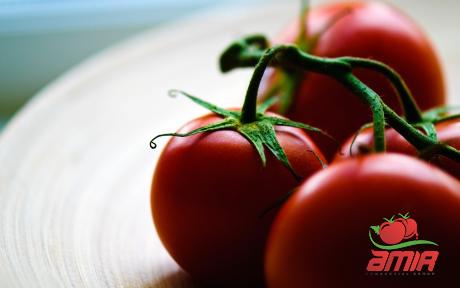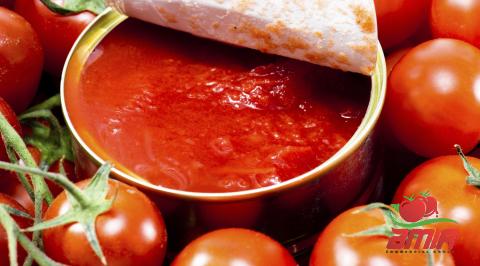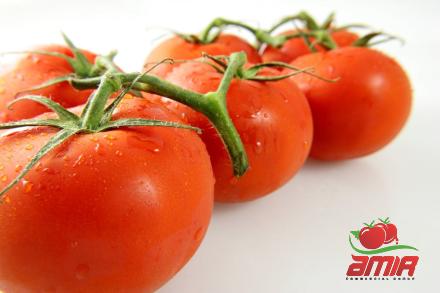Roasted tomato paste is a versatile and flavorful culinary ingredient that can elevate various dishes to new heights. With its rich, concentrated flavor and thick consistency, roasted tomato paste adds depth and complexity to soups, stews, sauces, and more. In this comprehensive guide, we will explore the origins of roasted tomato paste, its nutritional benefits, how it is made, and creative ways to incorporate it into your cooking repertoire. ## The Origins of Roasted Tomato Paste Tomatoes have been a staple ingredient in Mediterranean cuisine for centuries, with their vibrant color and juicy flesh adding a burst of flavor to dishes.

.
 While traditional tomato paste is made by cooking down fresh tomatoes, roasted tomato paste takes this flavor profile to the next level. The process of roasting tomatoes caramelizes their sugars and intensifies their umami-rich taste, resulting in a deep, complex flavor that is unmatched by its unroasted counterpart. Roasted tomato paste originates from the southern regions of Italy, where it is a key ingredient in dishes such as pasta alla Norma, pizza margherita, and puttanesca sauce. The slow-roasting process used to make this type of tomato paste allows the flavors to develop fully and creates a concentrated paste that is bursting with umami notes. ## The Nutritional Benefits of Roasted Tomato Paste In addition to its rich flavor profile, roasted tomato paste also offers a range of nutritional benefits. Tomatoes are packed with essential vitamins and antioxidants, making them a healthy addition to any diet. When tomatoes are roasted to make paste, their lycopene content becomes more bioavailable, providing a potent dose of this antioxidant compound that has been linked to a reduced risk of heart disease and certain types of cancer. Roasted tomato paste is also a good source of vitamin C, potassium, and fiber, making it a nutritious addition to your meals. Its concentrated form means you can use less of it to achieve a robust tomato flavor, reducing the need for added sugars or salt in your dishes.
While traditional tomato paste is made by cooking down fresh tomatoes, roasted tomato paste takes this flavor profile to the next level. The process of roasting tomatoes caramelizes their sugars and intensifies their umami-rich taste, resulting in a deep, complex flavor that is unmatched by its unroasted counterpart. Roasted tomato paste originates from the southern regions of Italy, where it is a key ingredient in dishes such as pasta alla Norma, pizza margherita, and puttanesca sauce. The slow-roasting process used to make this type of tomato paste allows the flavors to develop fully and creates a concentrated paste that is bursting with umami notes. ## The Nutritional Benefits of Roasted Tomato Paste In addition to its rich flavor profile, roasted tomato paste also offers a range of nutritional benefits. Tomatoes are packed with essential vitamins and antioxidants, making them a healthy addition to any diet. When tomatoes are roasted to make paste, their lycopene content becomes more bioavailable, providing a potent dose of this antioxidant compound that has been linked to a reduced risk of heart disease and certain types of cancer. Roasted tomato paste is also a good source of vitamin C, potassium, and fiber, making it a nutritious addition to your meals. Its concentrated form means you can use less of it to achieve a robust tomato flavor, reducing the need for added sugars or salt in your dishes.
..
 ## The Making of Roasted Tomato Paste Making roasted tomato paste at home is a simple process that requires just a few ingredients and a bit of time. To start, select ripe, flavorful tomatoes such as Roma or San Marzano varieties, as these will provide the best flavor for your paste. Preheat your oven to a low temperature, around 275°F, and cut the tomatoes in half lengthwise. Place the tomatoes cut-side up on a baking sheet lined with parchment paper, drizzle them with olive oil, and season with salt, pepper, and herbs such as thyme or basil. Roast the tomatoes in the oven for 2-3 hours, or until they have shrunk in size and developed a deep, caramelized color. Allow the tomatoes to cool slightly before transferring them to a food processor or blender to puree until smooth. Next, transfer the pureed tomatoes to a saucepan and cook over low heat, stirring occasionally, until the mixture has thickened to a paste-like consistency. You can adjust the seasoning as needed, adding more salt, pepper, or herbs to taste. Once the paste has reached your desired thickness, remove it from the heat and allow it to cool before transferring it to a sterilized jar for storage. ## Creative Ways to Use Roasted Tomato Paste Roasted tomato paste can be used in a wide variety of dishes to add depth, richness, and a touch of sweetness. One of the most popular uses for roasted tomato paste is in pasta sauces, where its concentrated flavor can elevate a simple marinara or ragu to new heights. Mix it with olive oil, garlic, and herbs to create a flavorful pizza sauce, or stir it into soups and stews for a boost of umami goodness. Roasted tomato paste also pairs well with grilled meats and vegetables, adding a savory-sweet element that complements their natural flavors. Spread it on sandwiches or use it as a base for salad dressings and dips to add a punch of tomato flavor to your meal. For a simple and delicious appetizer, try spreading roasted tomato paste on crostini and topping it with fresh mozzarella and basil for a classic bruschetta. The possibilities are endless when it comes to using roasted tomato paste in your cooking, so don’t be afraid to get creative and experiment with different flavor combinations. ## In Conclusion Roasted tomato paste is a versatile and flavorful ingredient that can take your cooking to the next level. Whether you use it to add depth to a pasta sauce, richness to a soup, or sweetness to a marinade, its concentrated flavor and nutritional benefits make it a valuable addition to any kitchen.
## The Making of Roasted Tomato Paste Making roasted tomato paste at home is a simple process that requires just a few ingredients and a bit of time. To start, select ripe, flavorful tomatoes such as Roma or San Marzano varieties, as these will provide the best flavor for your paste. Preheat your oven to a low temperature, around 275°F, and cut the tomatoes in half lengthwise. Place the tomatoes cut-side up on a baking sheet lined with parchment paper, drizzle them with olive oil, and season with salt, pepper, and herbs such as thyme or basil. Roast the tomatoes in the oven for 2-3 hours, or until they have shrunk in size and developed a deep, caramelized color. Allow the tomatoes to cool slightly before transferring them to a food processor or blender to puree until smooth. Next, transfer the pureed tomatoes to a saucepan and cook over low heat, stirring occasionally, until the mixture has thickened to a paste-like consistency. You can adjust the seasoning as needed, adding more salt, pepper, or herbs to taste. Once the paste has reached your desired thickness, remove it from the heat and allow it to cool before transferring it to a sterilized jar for storage. ## Creative Ways to Use Roasted Tomato Paste Roasted tomato paste can be used in a wide variety of dishes to add depth, richness, and a touch of sweetness. One of the most popular uses for roasted tomato paste is in pasta sauces, where its concentrated flavor can elevate a simple marinara or ragu to new heights. Mix it with olive oil, garlic, and herbs to create a flavorful pizza sauce, or stir it into soups and stews for a boost of umami goodness. Roasted tomato paste also pairs well with grilled meats and vegetables, adding a savory-sweet element that complements their natural flavors. Spread it on sandwiches or use it as a base for salad dressings and dips to add a punch of tomato flavor to your meal. For a simple and delicious appetizer, try spreading roasted tomato paste on crostini and topping it with fresh mozzarella and basil for a classic bruschetta. The possibilities are endless when it comes to using roasted tomato paste in your cooking, so don’t be afraid to get creative and experiment with different flavor combinations. ## In Conclusion Roasted tomato paste is a versatile and flavorful ingredient that can take your cooking to the next level. Whether you use it to add depth to a pasta sauce, richness to a soup, or sweetness to a marinade, its concentrated flavor and nutritional benefits make it a valuable addition to any kitchen.
…
 By understanding the origins of roasted tomato paste, its nutritional benefits, how it is made, and creative ways to use it, you can unlock the full potential of this culinary gem. So why not try making your own roasted tomato paste at home and see the difference it can make in your dishes? Your taste buds will thank you! ## Storage and Shelf Life of Roasted Tomato Paste Once you have made your delicious roasted tomato paste, it’s essential to store it properly to maintain its flavor and quality. Transfer the paste to a sterilized jar or airtight container and store it in the refrigerator for up to two weeks. You can also freeze roasted tomato paste for longer storage, maintaining its flavor for several months. Simply portion the paste into ice cube trays or small containers, freeze until solid, and then transfer the frozen cubes or portions to a freezer-safe bag for easy access. When using frozen roasted tomato paste, allow it to thaw in the refrigerator before using it in your recipes. Additionally, you can stir a cube directly into simmering soups or stews, where it will melt and incorporate seamlessly into the dish. ## Where to Buy Roasted Tomato Paste If you prefer the convenience of purchasing roasted tomato paste rather than making it yourself, you can find quality products at specialty food stores, gourmet markets, and online retailers. Look for brands that use high-quality tomatoes, natural ingredients, and traditional roasting methods to ensure the best flavor and texture. Many well-known Italian brands produce roasted tomato paste that is beloved for its intense flavor and culinary versatility. Additionally, you may find artisanal producers who offer small-batch roasted tomato paste made with heirloom tomatoes and unique flavor profiles. When choosing a roasted tomato paste to purchase, read the ingredient list to ensure that it contains only natural ingredients without added sugars, preservatives, or artificial flavors. Opt for products that highlight the flavor of roasted tomatoes and enhance your cooking without overpowering it. ## Roasted Tomato Paste Recipes to Try To inspire your culinary creativity, here are a few delicious recipes that feature roasted tomato paste as a star ingredient: ### Roasted Tomato and Red Pepper Soup Ingredients: – 2 red bell peppers, roasted and peeled – 1 onion, chopped – 2 cloves garlic, minced – 1 can diced tomatoes – 2 tablespoons roasted tomato paste – 4 cups vegetable broth – Salt and pepper to taste – Fresh basil for garnish Instructions: 1. In a large pot, sauté the onion and garlic until translucent. 2. Add the roasted bell peppers, diced tomatoes, roasted tomato paste, and vegetable broth. 3. Simmer for 20-30 minutes, then blend the soup until smooth. 4. Season with salt and pepper, garnish with fresh basil, and serve hot. ### Roasted Tomato Pasta Sauce Ingredients: – 1 pound pasta of choice – 2 tablespoons olive oil – 1 onion, diced – 2 cloves garlic, minced – 1 can crushed tomatoes – 2 tablespoons roasted tomato paste – Italian herbs (basil, oregano, thyme) – Salt and pepper to taste
By understanding the origins of roasted tomato paste, its nutritional benefits, how it is made, and creative ways to use it, you can unlock the full potential of this culinary gem. So why not try making your own roasted tomato paste at home and see the difference it can make in your dishes? Your taste buds will thank you! ## Storage and Shelf Life of Roasted Tomato Paste Once you have made your delicious roasted tomato paste, it’s essential to store it properly to maintain its flavor and quality. Transfer the paste to a sterilized jar or airtight container and store it in the refrigerator for up to two weeks. You can also freeze roasted tomato paste for longer storage, maintaining its flavor for several months. Simply portion the paste into ice cube trays or small containers, freeze until solid, and then transfer the frozen cubes or portions to a freezer-safe bag for easy access. When using frozen roasted tomato paste, allow it to thaw in the refrigerator before using it in your recipes. Additionally, you can stir a cube directly into simmering soups or stews, where it will melt and incorporate seamlessly into the dish. ## Where to Buy Roasted Tomato Paste If you prefer the convenience of purchasing roasted tomato paste rather than making it yourself, you can find quality products at specialty food stores, gourmet markets, and online retailers. Look for brands that use high-quality tomatoes, natural ingredients, and traditional roasting methods to ensure the best flavor and texture. Many well-known Italian brands produce roasted tomato paste that is beloved for its intense flavor and culinary versatility. Additionally, you may find artisanal producers who offer small-batch roasted tomato paste made with heirloom tomatoes and unique flavor profiles. When choosing a roasted tomato paste to purchase, read the ingredient list to ensure that it contains only natural ingredients without added sugars, preservatives, or artificial flavors. Opt for products that highlight the flavor of roasted tomatoes and enhance your cooking without overpowering it. ## Roasted Tomato Paste Recipes to Try To inspire your culinary creativity, here are a few delicious recipes that feature roasted tomato paste as a star ingredient: ### Roasted Tomato and Red Pepper Soup Ingredients: – 2 red bell peppers, roasted and peeled – 1 onion, chopped – 2 cloves garlic, minced – 1 can diced tomatoes – 2 tablespoons roasted tomato paste – 4 cups vegetable broth – Salt and pepper to taste – Fresh basil for garnish Instructions: 1. In a large pot, sauté the onion and garlic until translucent. 2. Add the roasted bell peppers, diced tomatoes, roasted tomato paste, and vegetable broth. 3. Simmer for 20-30 minutes, then blend the soup until smooth. 4. Season with salt and pepper, garnish with fresh basil, and serve hot. ### Roasted Tomato Pasta Sauce Ingredients: – 1 pound pasta of choice – 2 tablespoons olive oil – 1 onion, diced – 2 cloves garlic, minced – 1 can crushed tomatoes – 2 tablespoons roasted tomato paste – Italian herbs (basil, oregano, thyme) – Salt and pepper to taste










Your comment submitted.